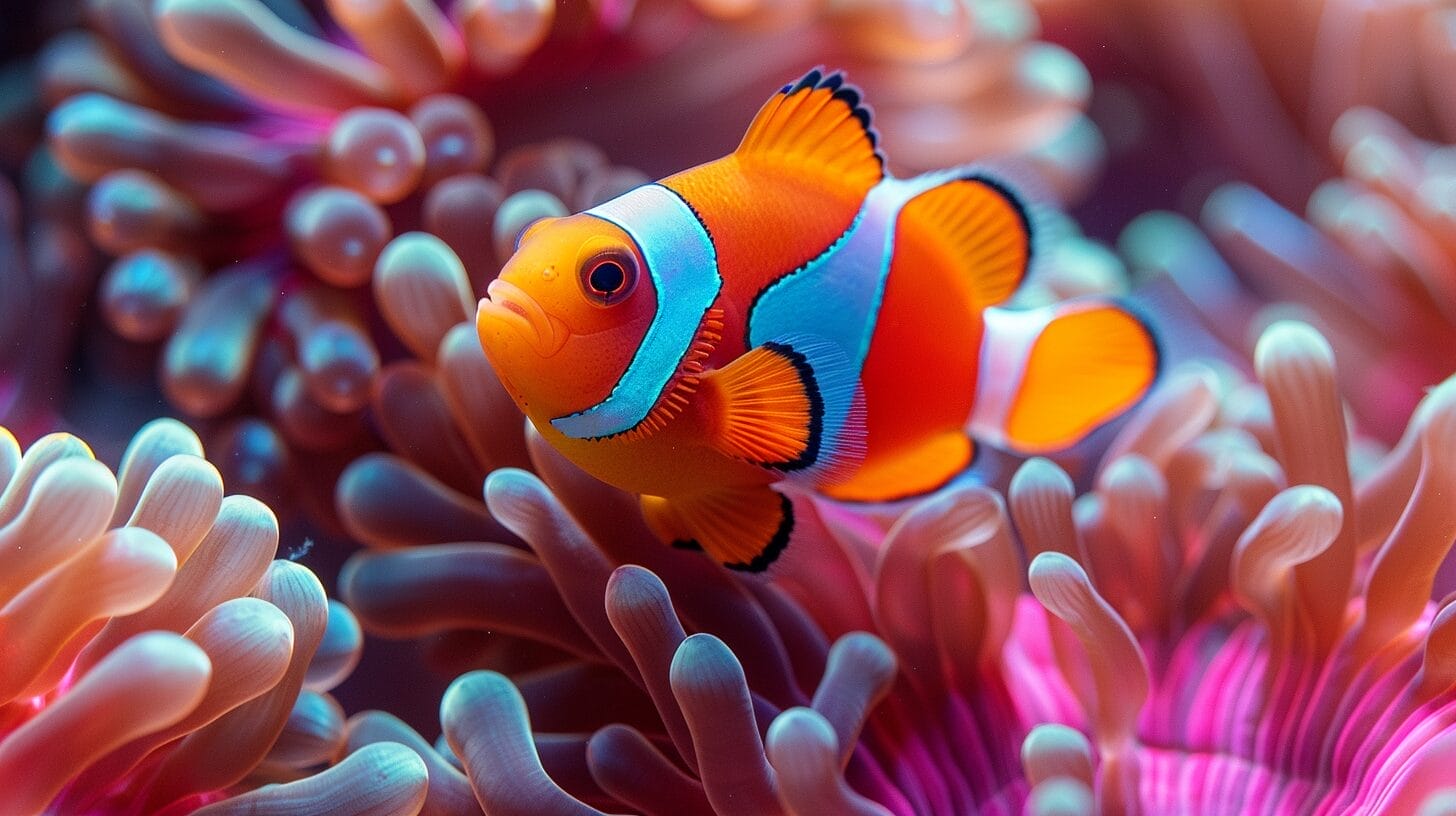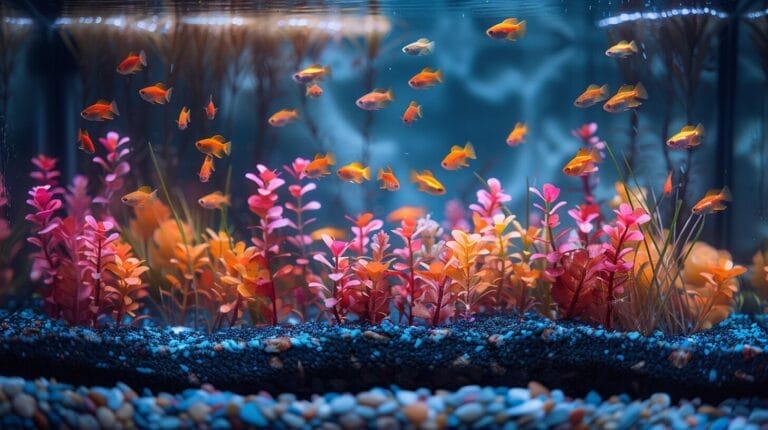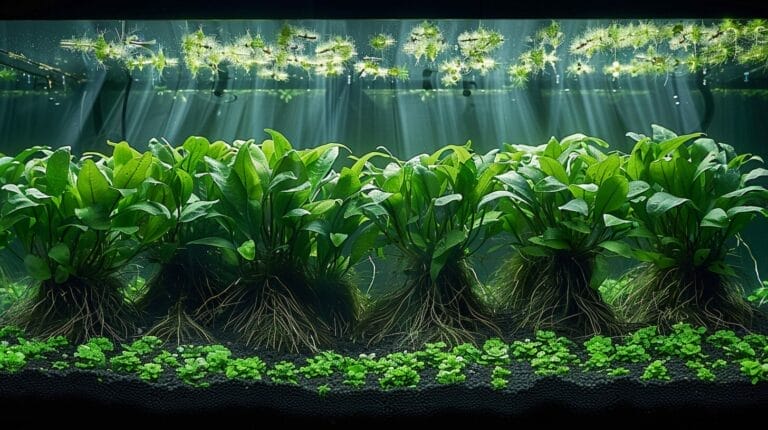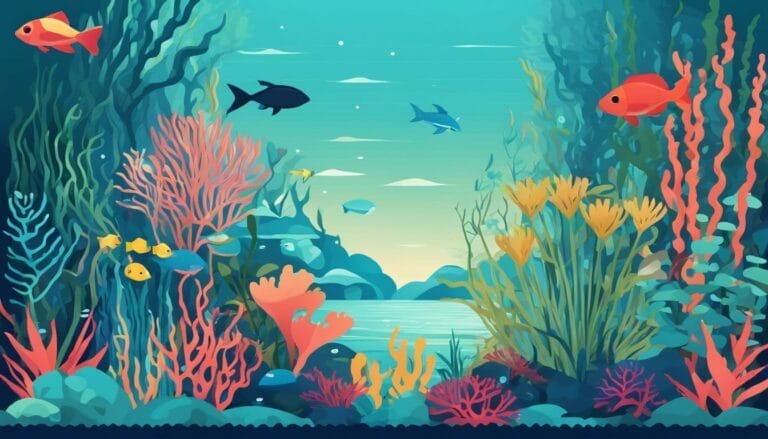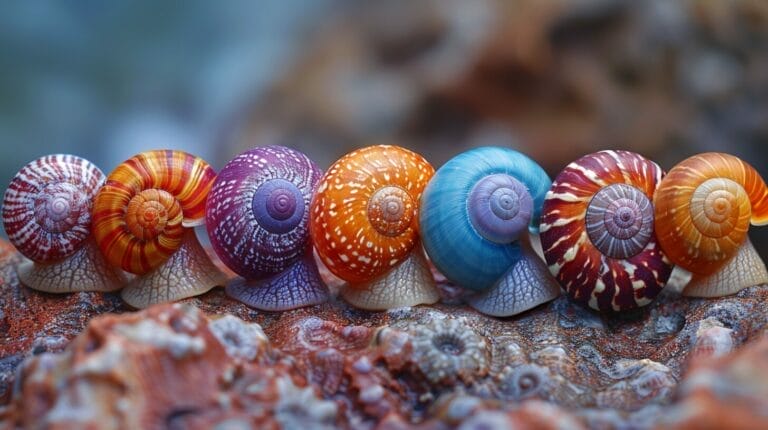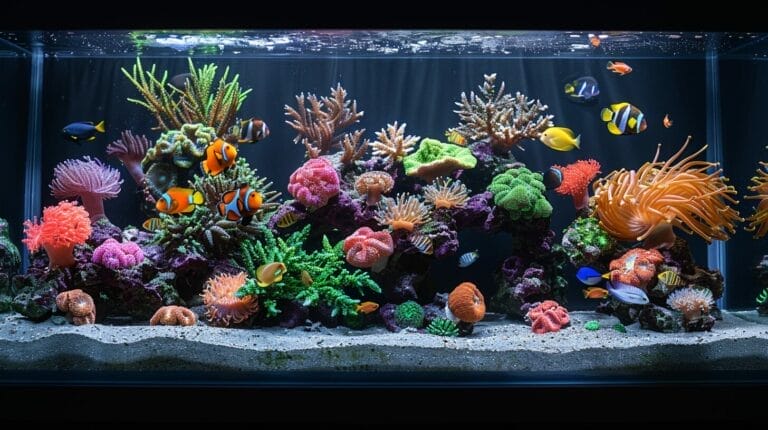Clownfish Hosting Anemone: Learn the Symbiotic Relationship
In the ocean, clownfish and anemones share a special bond. Clownfish find safety in the arms of anemones, while the anemones benefit from the care provided by the clownfish. This bond demonstrates amazing teamwork.
Different types of clownfish have their own preferences and each adds its own colorful flair. Providing care for anemones in a tank requires precision. Stable conditions and proper lighting are vital for their well-being. Understanding this bond brings joy. Let’s dive deeper to uncover more fascinating details in our Clownfish Hosting Anemone guide.
Key Takeaways
- Clownfish seek refuge in anemones for protection.
- Anemones benefit from clownfish’s cleaning and food-providing activities.
- Mucus layer on clownfish helps acclimate to anemones’ stinging tentacles.
- Different clownfish species have unique characteristics and anemone preferences.
- Successful hosting requires stable water parameters, suitable clownfish species, and proper lighting.
Understanding the Symbiotic Relationship Between Clownfish and Anemones

In the fascinating partnership between clownfish and anemones, a mutual benefit and intricate communication mechanism is observed. Clownfish use anemones’ tentacles as a refuge, gaining protection from predators. In return, the anemones benefit from the cleaning and food-providing activities of the clownfish.
A vital element in this relationship is the mucus layer covering the clownfish. It contains substances that suppress the anemones’ sting response, allowing the clownfish to live comfortably within its host. In exchange, the clownfish provides the anemone with nutrients and a safe place to lay eggs.
Identifying Different Types of Clownfish and Their Preferred Anemones
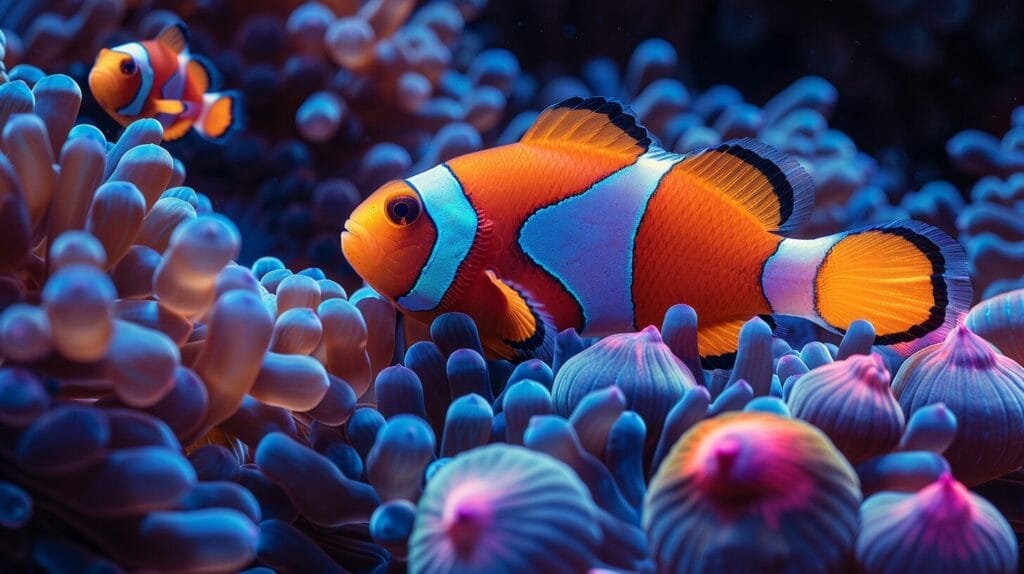
Each clownfish species has unique features and specific anemone preferences. For instance, true percula and false percula clownfish look similar, yet the true percula clownfish have fewer dorsal fin spines.
Ocellaris clownfish, known for their vibrant orange coloration, often pair with the magnificent sea anemone. In contrast, the yellow-striped Clarkii clownfish prefers the carpet anemone as its host. Understanding these species-specific preferences is key to creating a harmonious underwater environment.
The Colorful World of Clownfish: From Red to Pink Skunk

Clownfish exhibit a wide range of color variations, from striking red hues to the delicate pinkish tones of the pink skunk variant. Each color variation not only enhances the visual appeal of your aquarium but also contributes to creating a harmonious and symbiotic relationship between clownfish and anemones.
Tips for Successfully Hosting Anemones in a Clownfish Aquarium
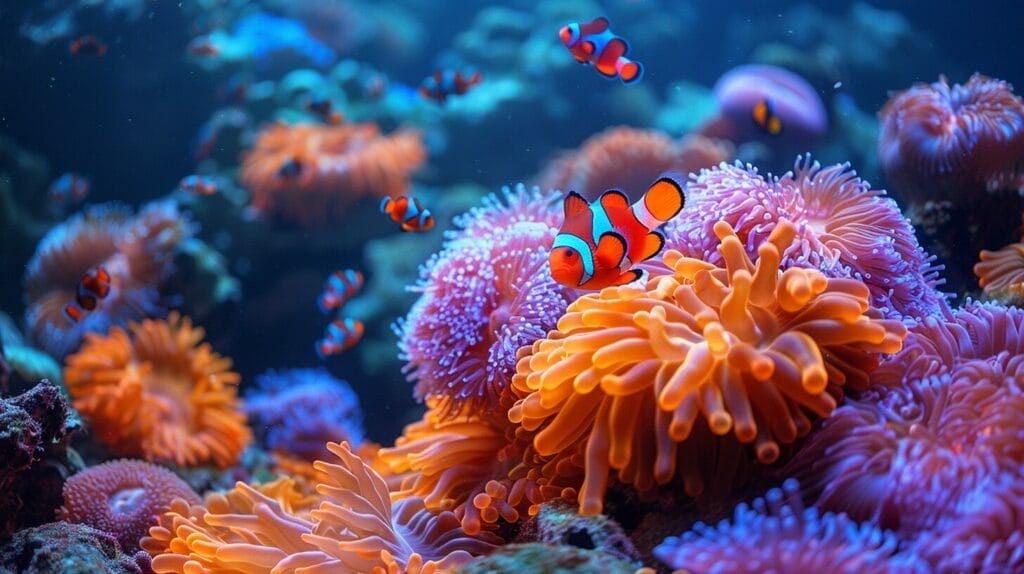
To successfully host anemones in a clownfish aquarium, it is essential to maintain suitable environmental conditions, including stable water parameters, adequate lighting, and good water quality. Furthermore, selecting clownfish species known to host anemones and introducing them to the anemone at a young age can enhance their compatibility.
| Environmental Conditions | Anemone Care | Clownfish Species |
|---|---|---|
| Maintain stable water parameters such as temperature and salinity | Position anemones in areas with moderate water flow | Select clownfish species known to host anemones |
| Supply adequate lighting for the anemones’ photosynthesis | Regularly nourish the anemones with appropriate food | Introduce clownfish to the anemone at a young age |
| Preserve good water quality through filtration and regular water changes | Monitor anemones for any indications of stress or disease | Observe the clownfish-anemone interaction for compatibility |
| Establish hiding spots for the clownfish within the anemone’s tentacles | Avoid aggressive tank mates that may harm the anemone | Slowly acclimate clownfish to the anemone’s presence |
Can Goldfish and Clownfish Live Together in the Same Tank?
Goldfish and clownfish should not be kept together in the same tank. Goldfish are freshwater fish, while clownfish require a saltwater environment. Mixing them in the same tank would result in stress, illness, and potential aggression. It’s important to research and follow proper goldfish bowl care tips to ensure their health and well-being.
Fascinating Facts About Percula Clownfish and Their Anemone Hosts
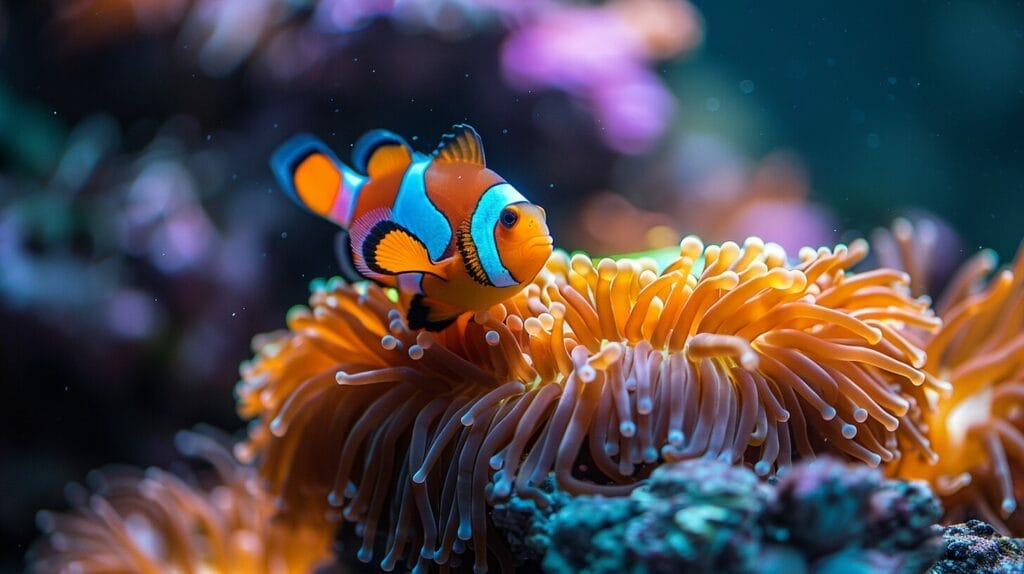
The world of Percula clownfish and their anemone hosts is full of enchanting behaviors and remarkable partnerships. The Percula clownfish is known for its vibrant orange color and distinctive white stripes. These clownfish have a unique relationship with their anemone hosts, which provide them with protection and a safe place to lay their eggs.
Conclusion
Overall, the symbiotic relationship between clownfish and anemones is truly fascinating. These colorful fish not only find protection in their anemone hosts, but also provide them with nutrients in return.
By understanding the different types of clownfish and their preferred anemones, aquarists can create a successful and harmonious environment in their tanks.
With proper care and attention, both the clownfish and anemones can thrive and create a beautiful underwater ecosystem that’s truly a sight to behold.
Frequently Asked Questions
What is the symbiotic relationship between clownfish and anemone?
Clownfish and anemone have a mutualistic relationship where the clownfish is protected by the stinging tentacles of the anemone, and in return, the anemone benefits from the clownfish’s waste as a food source.
How can I identify the different types of clownfish?
There are various types of clownfish, including ocellaris, clarkii, false percula, maroon, and true percula, each with distinct color patterns and markings.
What is a bubble-tip anemone and why is it important for clownfish hosting?
The bubble-tip anemone is a specific type of anemone known for its bubble-like tips and is a popular choice for clownfish hosting due to its symbiotic relationship with clownfish species.
What are some tips for successfully setting up an aquarium for clownfish hosting anemone?
To create a suitable environment for clownfish and anemone, ensure proper water parameters, a stable system, and adequate lighting such as metal halide to support the symbiotic relationship.
How can I ensure the clownfish and anemone thrive in their new home?
Regular feedings, maintaining water quality, and providing a stress-free environment are key factors in helping clownfish and anemone thrive in their aquarium.

